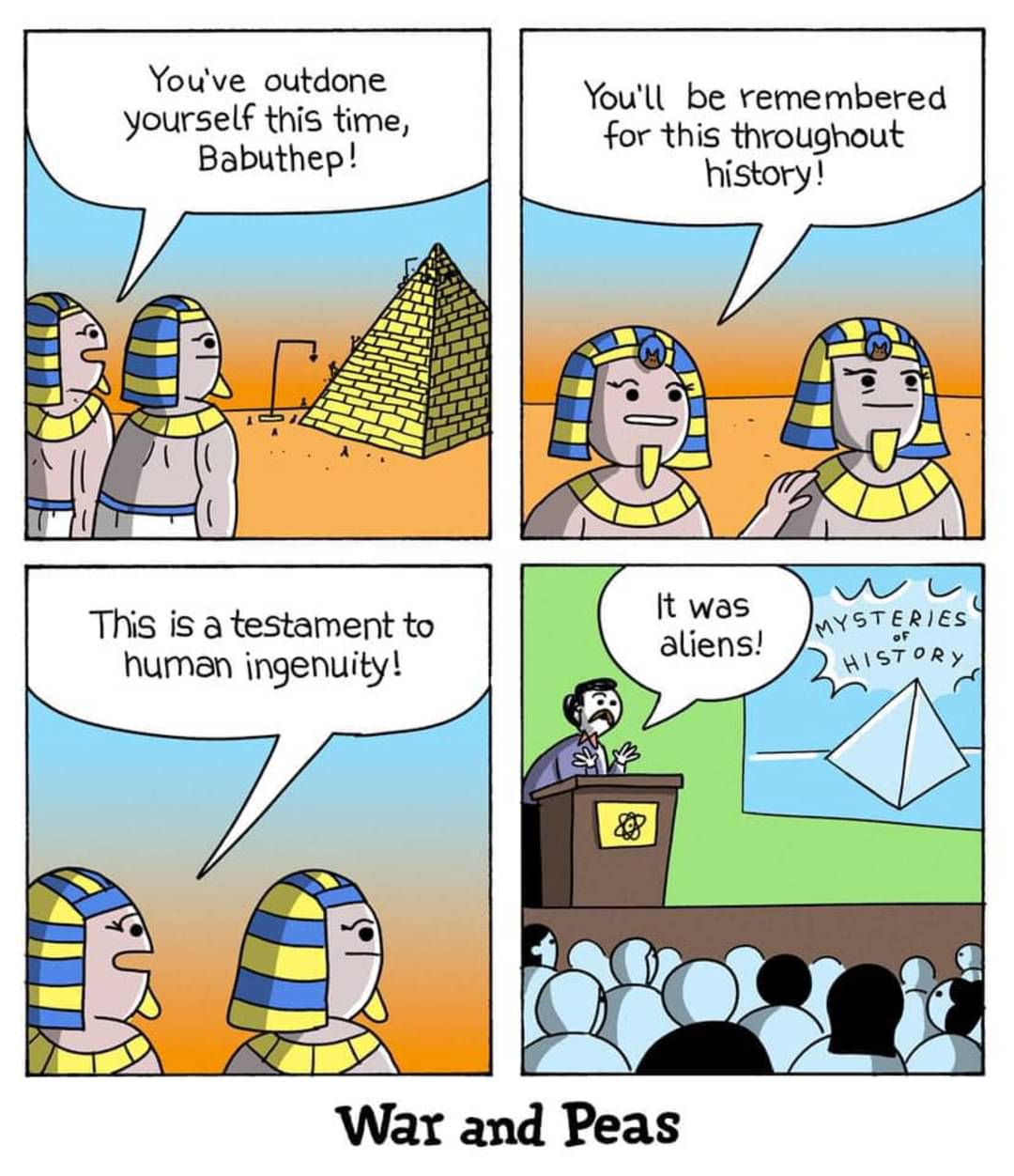this post was submitted on 09 Jul 2024
839 points (98.8% liked)
Science Memes
11205 readers
2290 users here now
Welcome to c/science_memes @ Mander.xyz!
A place for majestic STEMLORD peacocking, as well as memes about the realities of working in a lab.

Rules
- Don't throw mud. Behave like an intellectual and remember the human.
- Keep it rooted (on topic).
- No spam.
- Infographics welcome, get schooled.
This is a science community. We use the Dawkins definition of meme.
Research Committee
Other Mander Communities
Science and Research
Biology and Life Sciences
- [email protected]
- [email protected]
- [email protected]
- [email protected]
- [email protected]
- [email protected]
- [email protected]
- [email protected]
- [email protected]
- [email protected]
- [email protected]
- [email protected]
- [email protected]
- [email protected]
- [email protected]
- [email protected]
- [email protected]
- [email protected]
- [email protected]
- [email protected]
- [email protected]
- [email protected]
- [email protected]
- [email protected]
- !reptiles and [email protected]
Physical Sciences
- [email protected]
- [email protected]
- [email protected]
- [email protected]
- [email protected]
- [email protected]
- [email protected]
- [email protected]
- [email protected]
Humanities and Social Sciences
Practical and Applied Sciences
- !exercise-and [email protected]
- [email protected]
- !self [email protected]
- [email protected]
- [email protected]
- [email protected]
Memes
Miscellaneous
founded 2 years ago
MODERATORS
you are viewing a single comment's thread
view the rest of the comments
view the rest of the comments

So where’s their water erosion then?
Just to save the downvoters some trouble, I’m only suggesting that theories which are not supported by direct anthropological evidence are worth considering. I’m not saying aliens - or Atlanteans or whomever - carved the Sphinx. The erosion theory was just the first thing I thought of as an example.
https://www.robertschoch.com/sphinx.html
You can consider an idea and build a theory around it, but once your basic idea is disproven, your whole theory disappears. And the idea that the Sphinx erosion doesn't match the agreed upon age has already been proven wrong - as in, it has been explained that the observed erosion is perfectly compatible with what rock types are there and with the data that we know since the actual period it was built in, the mid third millenium BCE. So you don't have your premise that the erosion doesn't match the official age, and that means there is nothing left to consider here until you actually have something new, anything else is fanfiction.
Considering new idea is perfectly fine, no one disagrees with that, but you are not considering new ideas, you are considering old ideas that were proven wrong and not listening when someone tells you why it's wrong. Get new material.
Is it the case then that we should see similar erosion in contemporary local structures? My understanding was that we didn’t, is that not right?
https://youtu.be/DaJWEjimeDM?si=rwX4eZZQvGV22iiR first half is citing two guys who think the Sphinx is older than we think (including your guy); third guy and after show that the erosion and the faults didn't come from rain from outside, but water infiltration from below, from before the Sphinx was carved into the rock, and that yes, we do see it in other places in the same rock layer. Other buildings above it don't have that erosion from below. So the erosion is indeed old, but it didn't happen from rain falling after the Sphinx was carved out, so you can't use it to determine when the Sphinx was carved out of the ground.
Thanks. YT has started requiring a sign-in, but it appears to be only sometimes, so i’ll check it out the next time they feel like letting me in i guess.
I don't keep up with youtube alternatives but this one doesn't require login https://invidious.fdn.fr/watch?v=DaJWEjimeDM the video isn't loading easily but it seems to work after a bit
You can date rock like that with luminescene dating... My dude, it's great to wonder about the past. It's a beautiful thing but this guy isn't who you should be fixating on.
Is it not the case that the stone around the Sphinx was in situ or not “exposed to light (then re-buried)”? I’m assuming OSL is the technique since afaik the Sphinx structure wasn’t burned (TL)?
https://www.thoughtco.com/luminescence-dating-cosmic-method-171538
I see articles that OSL confirms established dates, just not sure how the exposed-to-light-then-reburied works. We know the Sphinx was buried in the late 18th century, but obviously had been uncovered at some point before that in order to be built - what effect would that have on the OSL dating?
https://www.researchgate.net/publication/263201697_Surface_luminescence_dating_of_some_Egyptian_monuments lol
lol. Yeah ok. That’s fine. Numbers and technology can’t lie.
https://annas-archive.gs/